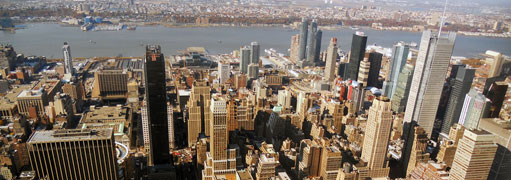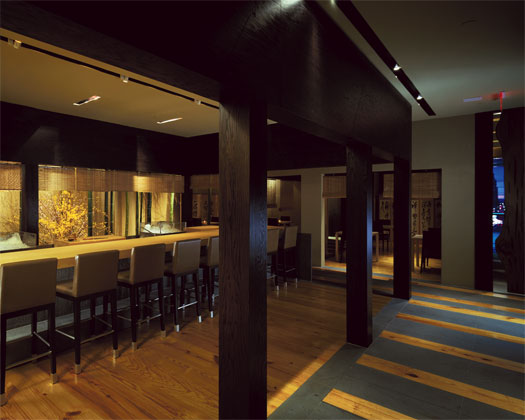There’s a lot you can cram into two days in New York City. Over one weekend this fall, my friend Mike and I visited the Museum of Modern Art, took pictures at the Empire State Building and listened to Chick Corea at the Blue Note with Gary Burton and the Harlem String Quartet. But we came for the food.Friday night we ate at Prune, the famed bistro run by Gabrielle Hamilton (author of Blood, Bones & Butter ). We arrived at a tiny space—a blend of funky East Village café and turn-of-the-century bar—roiling with people and fabulous food. Prune’s menu is a hodgepodge of classic French and adventurous cooking. After starting on roasted marrowbones served with grilled toast, Mike dined on a lamb shank and Brussels sprouts. I opted for sweetbreads—fried, sliced and drizzled with butter, bacon fat and capers, with a side of collard greens spiked with guanciale . Service was swift and friendly. Hamilton appeared on occasion from a basement stairway to survey her open kitchen.But nothing prepared me for the perfection of Masa, the three-star Michelin sushi restaurant of Chef Masa Takayama. After a stellar career in Japan and Los Angeles, Takayama sold his Ginza Sushiko restaurant in L.A. to a sous chef. In 2004, he opened Masa and Bar Masa in New York City’s Time Warner Center. They’re next to Thomas Keller’s Per Se and Bouchon Bakery.Our expectations rose the moment we faced Masa’s door of polished burled wood. We were greeted, then led to our seats at the center of the sushi bar—a long slab of pale, unvarnished hinoki wood. Across the bar and to our right, Chef Masa prepared his mise en place . I was reminded of the austerity and order of a Japanese tea ceremony. Sous Chef Fuji stood across the bar and to the left with the same orderly setup. We were about to savor an omakase (chef’s choice) meal like no other.The first of 28 dishes arrived—a small ceramic slab with kegani (“hairy crab” from Hokkaido, Japan) garnished with chrysanthemum petals and flakes of gold leaf. The next dish, toro (fatty tuna) caviar, was followed by fugu (blowfish) two ways: sashimi and karaage (sautéed). The sashimi was light and firm and sliced very thin. Nothing goes to waste, and the karaage was a cooked part of the blowfish not used for sashimi.Scottish langoustine arrived grilled in butter. Mike opted for the additional Wagyu tataki —a carpaccio of beef covered in slices of white truffle. The kue (a kind of grouper) and foie gras nabe (hot pot) arrived as a large, covered pot with an arrangement of small plates. Foie gras, in this case, was monkfish liver. The sous chef removed the lid to reveal a bubbling broth in which we put one piece each of the liver and grouper for a few seconds before we ate them. The dishes were taken away and replaced by a single bowl of the hot broth, now flavored by our fish.Then came 20 servings of nigiri sushi made by Masa or Fuji, each accompanied by a description of the fish as the chefs handed them over the counter. The portions consisted of rice and fish about two-thirds the size of the sushi most Japanese restaurants serve. In order, we savored striped jack, sea bream, toro , hirame (fluke), snapper, squid, sweet shrimp, orange clam, hotategai (scallop), grilled toro sinew, chub mackerel, tiger prawn, seawater eel, freshwater eel, sea urchin, octopus, matsutake mushroom, white truffle, scraped toro and shiso leaf. Most of the fish is flown in from Japan and is incredibly sweet and fresh.We finished with a plate of persimmon and declined the additional dessert of white truffle ice cream.Chef Masa offered to let me take a picture with him, but I explained that I didn’t bring a camera or a phone. “We came for the food,” I said. He grinned and said, “Good.”












